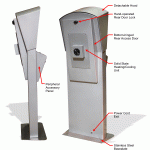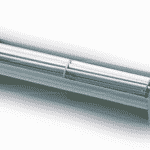Kiosk Cooling Considerations
Enclosure cooling overview of best practices including air conditioners, heat exchangers, fans and blowers. Applies to NEMA 12,4 & 4X . Open and closed loop.
Source: blog.kooltronic.com
From our page
Outdoor Heating and Cooling
Integrating the correct HVAC unit maintains the optimal temperature and humidity level within the kiosk, for peak reliability. Your provider will consult with deployers on the operational environment, making recommendations for the best cost/performance selection. Outdoor-Sizing Guide and also Outdoor-eic_understanding_heatload_ebook are useful for determining how much cooling or heating is needed. TECA Cooling is a member of the Industry Group and is highly skilled in cooling. Kooltronic has a nice sizing tool as well.
The standard units are compressor-based. Heating and cooling options include thermocouples which are smaller than compressors but also more money for less cooling..
Consider the environment. Even in a closed system there will be exposure to outside air. And the kiosk enclosure itself. Is it salty? If so you might consider stainless steel. Another option is zinc-rich primer powdercoat as well as G90 Electroplated.
Choose components wisely and engineer design your unit to maximize natural cooling and heating and you can often eliminate or at least mitigate required A/C and heating requirements.
Another heat consideration is direct sunlight in a warm climate (we are thinking Arizona, Dallas or Florida). Here is fan flow device from Panel-Brite which is a fan for cooling the touchscreen. Ventilation and smart design cannot be stressed enough.
From Panel-Brite:
Using touch screens of any kind in extremely hot temperatures usually requires extra airflow to move super-hot air out of the gap between the front of the panel and back of the touch screen.
For these types of outdoor applications, the air gap should be increased using thicker foam tape when mounting the touch screen to the panel. This gap should certainly be more than what is used for indoor applications.
A locale such as Los Angeles is not as severe as a low humidity state which surprises people
Typically units will come with air filters. They need to be maintained. Don’t adequately filter and you can end up with “isotropic” screens such as McDonalds and Samsung demonstrated. See Updated McDonalds Menu boards Failures – sometimes it is as simple as NOT changing a filter


